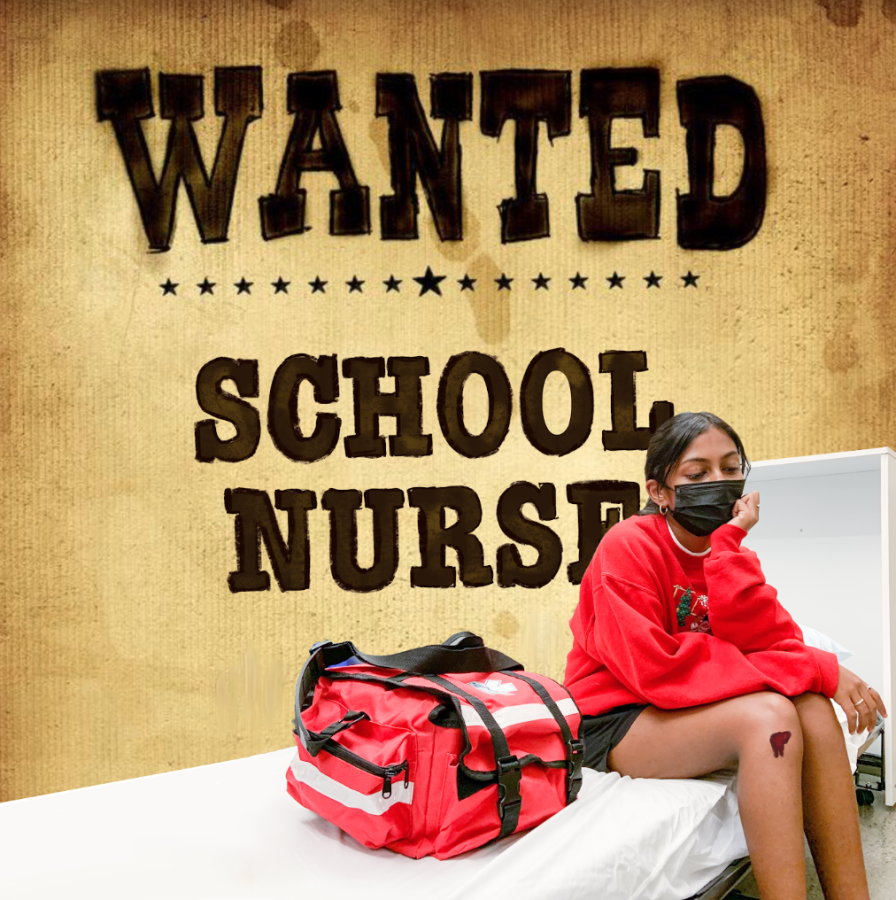FUHSD schools need more school nurses
Having a registered school nurse available on Lynbrook’s campus would greatly benefit the student body and raise the school’s health standards. (Graphic illustration by Susanna Tang.)
August 30, 2022
From mere splinters to intense migraines, students’ health emergencies that occur during school hours are often treated with limited medical attention due to the absence of a trained and licensed nurse on campus. Lynbrook is preparing to introduce a full-time health clerk; in the meantime, office workers who are certified to take on the role of part-time health clerks treat students in need on campus. However, these staff members are sometimes unable to fulfill the more complex medical needs of students due to legal limitations. Health clerks differ from registered nurses in that they are Unlicensed Assistive Personnel, meaning they are far more limited in their scope of practice compared to registered nurses.
FUHSD provides two fully-licensed district nurses: one is available on request for each school and the other manages healthcare protocols. District administrators believe that with the addition of the second district nurse since the 2020-21 school year, students and families have been appropriately supported. However, having at least one registered nurse readily available at each FUHSD school would largely improve the district’s health standards, as registered nurses have access to more resources and are more knowledgeable than health clerks.
“Many school nurses go on to complete their Master’s of Science degree in Nursing to advance their skills in practical and community nursing,” said Jung Hong, the district nurse who is available on request. “With both nursing degrees, nurses are given extensive training in patient care, health assessment and disease prevention. These skills are not routinely taught for other health-related majors.”
Contrary to a registered nurse’s 18 to 24 months of rigorous education that earns them their license, a health clerk receives six hours of training in basic First Aid and CPR, making them less equipped to conduct treatments than registered nurses.
“As a health clerk, I am not allowed to diagnose or administer any medications,” said Jena Rajabally, Lynbrook’s attendance accounting specialist and part-time health clerk. “I can use bandages, clean up a wound with water and just help students until their parents or medical help arrives.”
The limitations of FUHSD’s health clerks’ medical qualifications and resources are also occasionally reflected in students’ health concerns across campus.
“I once got hit in the head with a volleyball during PE,” sophomore Aadya Khazanchi said. “The health clerk could only give me ice and water, which helped a lot, but if we had a registered nurse, they might have also been able to observe my behavior or do some tests to see if I had a concussion.”
However, additional nurses also means additional stipends to pay, which may encounter budget restrictions. FUHSD should consider adjusting the tight budget by investing more funds into health services to enhance the healthcare of its students.
While health clerks and first-aiders in FUHSD serve an important role in providing basic medical care, there are many resources they cannot legally provide to students. Thus, a full-time registered nurse with legal authority at each school is necessary to provide a greater safety net for student medical issues and raise FUHSD’s healthcare standards.
“It would be best practice for all schools in California to have at least one full-time nurse,” Hong said. “Having a nurse on campus means more help in medical emergencies and increased safety for students and staff. It also means the nurse can build a relationship with the school community and as a result provide better patient care.”

































































Neale Patook • Aug 31, 2022 at 4:24 pm
My favorite article.
Richard • Aug 30, 2022 at 9:33 pm
i agree but like who gets a concussion from getting hit in the head with a volleyball